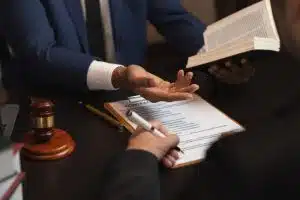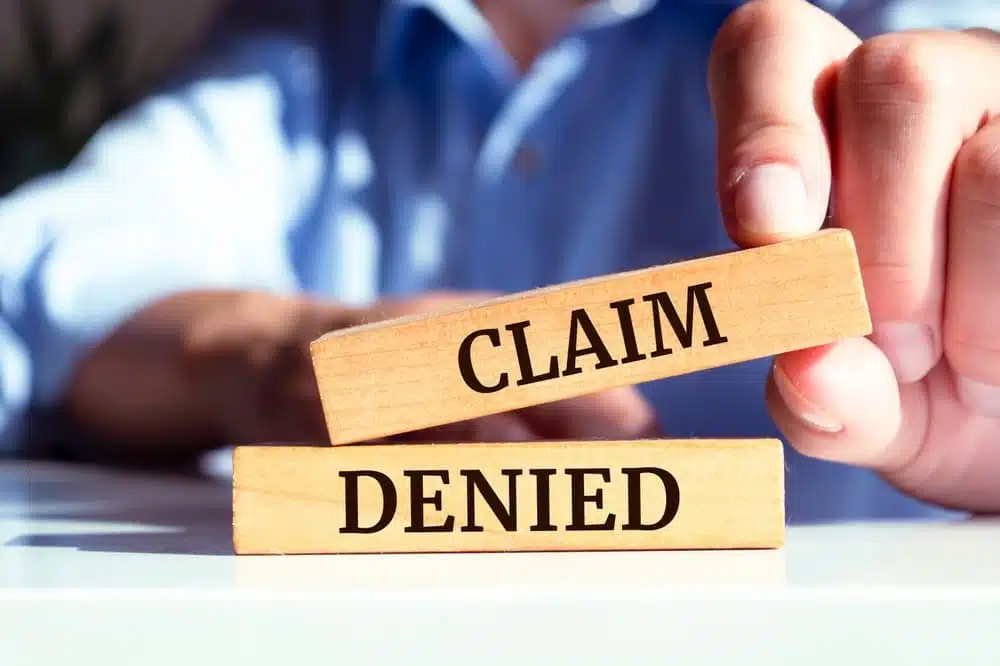
Determining fault in a T-bone accident is like solving a complex puzzle. These collisions, known for their severity and intricate liability issues, often occur at intersections.
Fault assessment is crucial for all involved parties due to the legal and insurance complexities surrounding T-bone accidents.
Multiple factors, such as adherence to traffic laws and driver actions, contribute to determining who is at fault for a T-bone accident.
Drivers, police officers, and lawyers must learn about T-bone crashes to handle post-accident procedures and develop effective preventive measures.
If you or a loved one injured in a T-bone Accident, contact our skilled car accident attorneys for the better legal representation.
How T-Bone Accidents Happen
T-bone accidents, also known as side-impact collisions, occur when the front of one vehicle strikes the side of another, forming a T shape.
These severe accidents often result in significant injuries and property damage.
Common scenarios that lead to T-bone accidents include:
- Running a red light or stop sign: When a driver fails to stop at a red light or stop sign and enters an intersection, they may collide with a vehicle with the right of way.
- Failure to yield: T-bone accidents can occur when a driver fails to yield to oncoming traffic while turning left or entering a road from a side street or parking lot.
- Distracted driving: Drivers distracted by their phones, passengers, or other non-driving activities may fail to notice traffic signals or other vehicles, increasing the risk of a T-bone collision.
- Speeding: Excessive speed can make it difficult for drivers to control their vehicles and react to changing traffic conditions, increasing the likelihood of running a red light or failing to yield.
- Impaired driving: Drivers under the influence of alcohol, drugs, or certain medications may have impaired judgment and slower reaction times, making them more likely to cause a T-bone accident.
- Poor visibility: Adverse weather conditions, such as heavy rain or fog, can reduce visibility and make it harder for drivers to see other vehicles or traffic signals, increasing the risk of a side-impact collision.
- Vehicle malfunctions: In rare cases, a T-bone accident may be caused by a vehicle malfunction, such as brake failure or a tire blowout, which can cause a driver to lose control and enter an intersection unexpectedly.
T-bone accidents often result from complex factors, including traffic violations, environmental conditions, and vehicle malfunctions.
While driver behavior can contribute to these accidents, so can multiple elements. A car accident lawyer helps T-bone accident victims understand what’s happened and what to do next.
How Do Lawyers Determine Fault in a T-Bone Accident?
Determining fault in a T-bone accident requires a thorough investigation and analysis of the evidence.
Factors considered include:
- Right-of-way: Traffic laws dictate which vehicle has the right to proceed through an intersection. Failure to adhere to these laws can indicate fault.
- Witness statements and surveillance footage: These can provide insights into the actions of both drivers leading up to the accident, such as distraction, speeding, or reckless behavior.
- Vehicle positions and damage: The location of the impact and the damage to each vehicle can help reconstruct the sequence of events and determine which driver had control of the intersection.
In some cases, both drivers may share fault. The allocation of fault depends on the specific laws of the state where the accident occurred.
Lawyers, insurance companies and courts use the available evidence to establish liability and determine appropriate compensation.
The Basics of Pure Comparative Negligence
New York follows the pure comparative negligence rule when determining fault and awarding damages in personal injury cases, including car accidents.
Under this rule, each party involved receives a percentage of fault based on their actions or inactions that contributed to the incident.
Key points about New York’s pure comparative negligence rule:
- Fault allocation: The fault is allocated among all parties involved in the accident based on the evidence and the extent to which each party’s actions contributed to the incident.
- Damage awards: The amount of damages a party can recover is reduced by their percentage of fault. For example, if a party is found to be 30% at fault and the total damages are $100,000, they can recover only $70,000.
- Recovery despite fault: Unlike some states, New York allows a party to recover damages even if they are more than 50% at fault for the accident. Their percentage of fault will reduce their recovery.
- Multiple parties: When multiple parties are involved in an accident, the fault is apportioned. Each party is responsible for paying damages in proportion to their percentage of fault.
- Insurance claims: Insurance companies also use the pure comparative negligence rule when settling claims. They will investigate the accident and assign fault percentages to determine the payout for each party.
The pure comparative negligence rule ensures that each party is held accountable and that damages are fairly awarded based on the degree of fault.
This rule encourages everyone to provide evidence and arguments supporting their case. Fault significantly impacts the financial outcome of a personal injury claim.
What if I Had the Right of Way?
Having the right of way doesn’t always mean you’re not partially fault.
Fault determination considers all aspects of the incident, including actions of all parties, road conditions, and adherence to traffic laws.
What Happens When a Third Party is Involved?
Sometimes, you can hold third parties not directly involved in a collision responsible.
Scenarios include:
- Vehicle manufacturers, if a defect contributed to the accident.
- Maintenance or repair shops, if improper work led to a mechanical failure.
- Employers, if the driver was acting within the scope of their employment.
- Government entities, for poor road conditions they failed to fix.
- Bars or restaurants, for serving alcohol to visibly intoxicated or underage persons.
- Other drivers, if their actions caused a situation leading to the accident.
Determining third-party liability is complex and depends on the jurisdiction’s laws.
Do I Need an Experienced Car Accident Lawyer?
After a T-bone accident, an experienced car accident lawyer can:
- Assess your case: A lawyer will review the details of your accident, including police reports, witness statements, and medical records, to determine the strength of your case and identify potential sources of compensation.
- Investigate the accident: Your lawyer may work with accident reconstruction experts and other professionals to gather additional evidence, such as surveillance footage or vehicle data, to support your claim and establish fault.
- Communicate with insurance companies: A car accident lawyer can handle communications with insurance adjusters on your behalf, ensuring that your rights are protected and that you don’t inadvertently say anything that could harm your claim.
- Negotiate a settlement: Your lawyer will use their knowledge of the law and the evidence in your case to negotiate a fair settlement with the insurance company, considering your current and future medical expenses, lost wages, and pain and suffering.
- Represent you in court: If the parties can’t reach a fair settlement, a car accident lawyer presents arguments and evidence to support your case and advocate for compensation.
- Explain your rights and options: A lawyer helps you understand your legal rights and options and the potential outcomes of your case so that you can make informed decisions throughout the process.
- Manage deadlines and paperwork: Your lawyer will ensure that all necessary paperwork is filed correctly and on time and will manage important deadlines related to your claim, such as the statute of limitations for filing a lawsuit.
- Provide support and guidance: Dealing with the aftermath of a T-bone accident can be stressful and overwhelming. A car accident lawyer can support and guide you throughout the process, answering your questions and helping you navigate the legal system.
By working with a skilled Personal injury lawyer, you can focus on your recovery while your attorney handles the legal aspects of your case and fights for the compensation you deserve.
T-bone FAQ
Q: What is a T-bone accident?
A: A T-bone accident, also known as a side-impact collision, occurs when the front of one vehicle strikes the side of another, forming a “T” shape.
Q: Why are T-bone accidents so dangerous?
A: T-bone accidents are hazardous because the sides of vehicles offer less protection than the front or rear. This can lead to severe injuries for the occupants of the struck vehicle, especially if the collision occurs on the driver’s side.
Q: What are the common causes of T-bone accidents?
A: Common causes of T-bone accidents include running red lights or stop signs, failure to yield the right of way, distracted driving, speeding, impaired driving, poor visibility, and vehicle malfunctions.
Q: Who is typically at fault in a T-bone accident?
A: Fault in a T-bone accident depends on various factors, such as which driver had the right of way, whether anyone violated traffic laws, and if any extenuating circumstances contributed to the collision. In many cases, the driver who struck the side of the other vehicle is found to be at fault.
Q: How can I prove fault in a T-bone accident?
A: To prove fault, gather evidence such as police reports, witness statements, photos of the accident scene and vehicle damage, traffic camera footage, and medical records. An experienced car accident lawyer can help you build a strong case.
Q: What should I do after a T-bone accident?
A: If you’ve been in a T-bone accident, seek medical attention, even if you don’t feel injured. Call the police to report the accident and obtain a police report. Gather evidence, exchange information with the other driver, and contact your insurance company.
Consider consulting with a car accident lawyer to protect your rights and explore your options for compensation.
Q: How can I prevent T-bone accidents?
A: To prevent T-bone accidents, always obey traffic signals and signs, yield the right of way when required, and remain focused on the road.
Avoid distractions, maintain a safe speed, and never drive under the influence of alcohol or drugs. Regularly maintain your vehicle to reduce the risk of malfunctions that could contribute to accidents.





